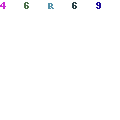SIUE professor compares famous writer’s early work to internet bloggers
Americans may have been blogging, perhaps a century before the invention of the internet.

SIUE History professor Jason Stacy made a presentation on Walt Whitman in December. Stacy said Whitman's writing as a journalist is similar to the writing style of today's bloggers. (File photo)
According to SIUE history professor Jason Stacy, journalists of small daily and weekly newspapers practiced the style of blogging, as did one of the most significant literary contributors in American history.
Stacy argues that it was this creative environment in these smaller circulation publications that may have helped foster the trademark writing style of 19th century poet and writer Walt Whitman.
In his current project based on the popular author and writer, Stacy, along with SIUE doctoral students Mark Neels and Gertrud Elisberg, look at the period in Whitman’s life in the 15 years before he became a poet. These years preceded the 1855 publication of Whitman’s first major literary work, “Leaves of Grass.”
“Literary critics and historians have always been interested in that long foreground of Whitman’s poetry,” said Stacy who has written one book on the popular poet and edited the 1860 edition of “Leaves of Grass” for the University of Iowa Press. “Where does it come from? … What are its origins? Part of my work is to trace those origins in the 15 years that Walt Whitman was a journalist. I think that if you want to understand Walt Whitman’s poetry, you’ve got to read his journalism.”
Stacy, Neels and Elisberg made a presentation on the project at SIUE in December on how Whitman and other journalists writing for second and third tier newspapers essentially functioned as early bloggers in the 19th century. Stacy will publish his third Whitman book in May, which he co-edited with Douglas Noverr of Michigan State University. The book is a collection of Whitman’s journalism articles.
Due to limited budgets, smaller circulation newspapers did not have easy access to information on national events during the early and mid-19th century. The invention of the telegraph allowed larger newspapers to deliver timely news about historic events of the time period, such as the Mexican-American War. Smaller-circulation newspapers such as the New York Sunday Dispatch and the New York Aurora, were relegated to collecting stories secondhand from larger publications. Many of these articles were written as commentaries, critiques or criticisms similar to today’s bloggers.
“The job of these second tier and third tier papers that Whitman worked for was largely to comment on the news – so it’s not so unlike the blogs of today,” Stacy said “A blogger does not have reporters in the Middle East; they do not have reporters in Washington D.C. What bloggers often do is they check the major news outlets … and they then serve as a kind of commentary or analysis of the news that they are acquiring from the major news outlets. Whitman’s newspapers are doing the same. So Whitman is writing a commentary on the news, editorializing on the news and analyzing the news by necessity because of a technological change – the telegraph and its monopolization by larger newspapers.”
The project is part of a three-year study to chronicle Whitman’s journalism career for the Walt Whitman Archive. Stacy’s project is part of a National Endowment for the Humanities grant called “Walt Whitman as an Author Before ‘Leaves of Grass,’” which also studies Whitman’s poetry and short fiction, which is being collected by other scholars from the University of Nebraska and the University of Iowa. Professors Ken Price of the University of Nebraska and Ed Folsom of the University of Iowa direct the Walt Whitman Archive.
The journalism portion of the grant involves the scanning, encoding and annotating of Whitman’s newspapers editorials so that readers can delve into the early stages of Whitman’s writing career from their own computers or devices. Stacy and his graduate students are providing citations so readers can further understand the context in which Whitman makes his references in his columns.
Whitman spent time as a reporter, editor and printer. Whitman wrote for papers in New York City, Brooklyn and Long Island. He traveled to various districts in New York City including P.T. Barnum Museum in lower Manhattan, the meat market, the schools and a local synagogue.
“He was kind of an eyewitness to the city for people who lived in the city,” Stacy said.
The Walt Whitman Archive is a digital resource that collects the author’s published works and different articles, poems and other writings in an online library. Funded by the National Endowment for the Humanities and the University of Nebraska, scholars for the archive began digitizing Whitman’s work in 1995. The archive also includes all editions of “Leaves of Grass” in digital format.
Filed Under: Historical Studies • Human Interest












